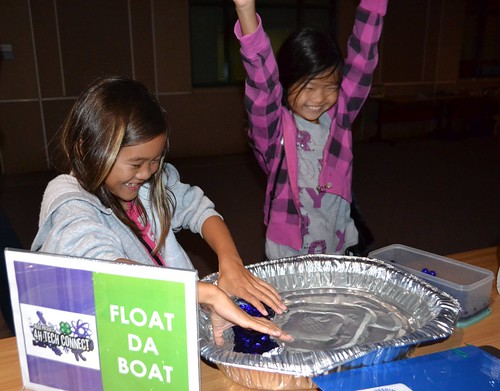
This post is part of the Science Tuesday feature series on the USDA blog. Check back each week as we showcase stories and news from USDA’s rich science and research portfolio.
If America is to maintain its role as a global leader, it needs to develop more world-class talent in science, technology, engineering, and mathematics (STEM), especially among underrepresented groups, such as women and minorities.
This need is especially true in rural Hawaii, where developing renewable and sustainable energy is vital due to the isolation of island living and high energy costs. Hawaii has the highest cost of living in the nation and is more dependent on imported fossil fuels than any other state. Preparing students for entry into the renewable energy industry could help the state's economy and overall economic sustainability.
Hawaii is addressing these issues with the “Women in Technology” project, managed by the Maui Economic Development Board, Inc. USDA’s National Institute of Food and Agriculture (NIFA) is supporting this project with a $265,000 grant from its Women and Minorities in Science, Technology, Engineering, and Mathematics Fields (WAMS) program.
“Girls and women are one of the greatest untapped resources in filling the STEM skills-gap,” said Leslie Wilkins, vice president of the Maui Economic Development Board. “Our goal is to increase the number of students in these subjects, make STEM resonate with them, and cultivate a passion for these subjects at a young age.
The program has created 32 STEM-related education programs that were implemented in schools with students ranging from the primary to college-level as well as internship placement with local employers.
“The most important work we do is build self-efficacy among girls and women,” Wilkins said. “Studies show that local boys qualify a successful career by the amount of money they will be able to make. Girls, on the other hand, speak in broader terms; they want to help people, help the environment.”
The Women in Technology program addresses this by showing girls and women that careers in computer programming, engineering, and software development do help people by offering hands-on experiences through job shadowing.
“We match girls in job shadowing programs so they can have role models and see young women from the same community now working in STEM fields and making a difference,” said Wilkins.
The program has been so successful locally, reaching 40,000 students state-wide, the U.S. State Department and the Office of Naval Research tasked the project to take its clean energy curriculum to Thailand for a pilot study to train Thai and Cambodian teachers on how to encourage their students to self-identify into STEM fields.
“We’re expanding our reach to teachers to build an even bigger return on investment. We’re building STEM labs in schools and a K-12 curriculum that is culturally relevant,” Wilkins said.
NIFA invests in and advances agricultural research, education and extension and seeks to make transformative discoveries that solve societal challenges.


